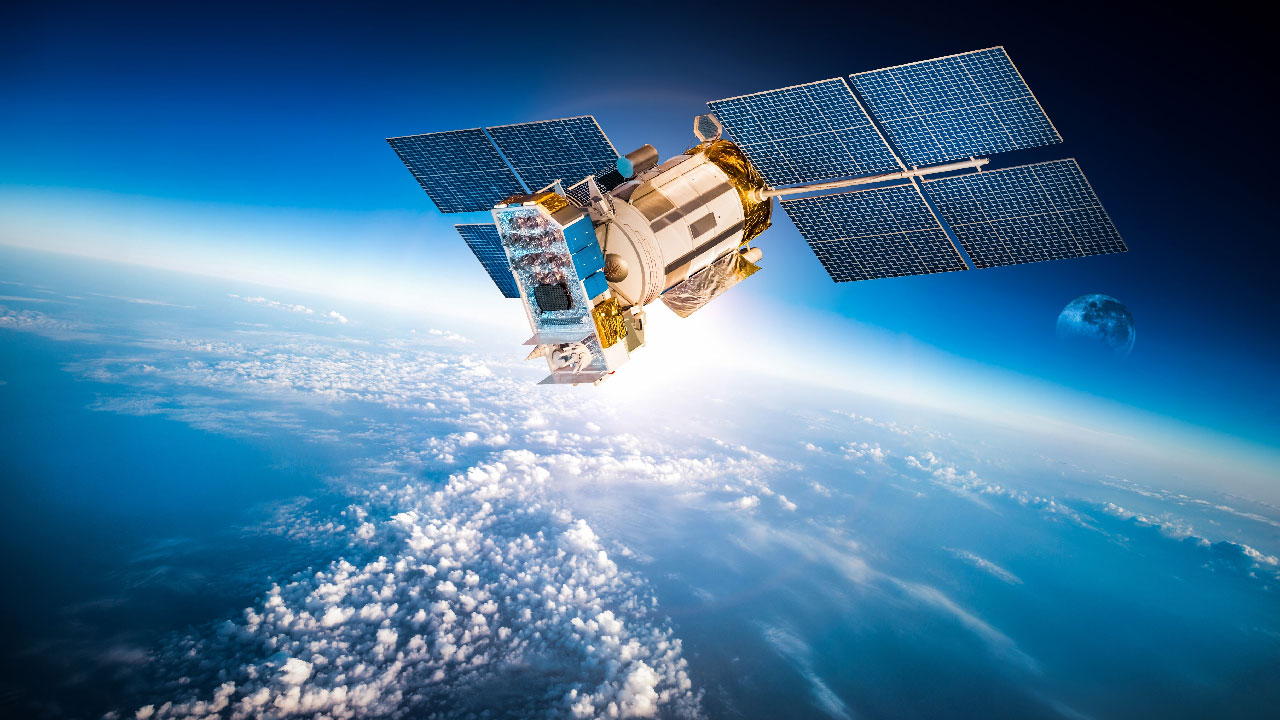Bluetooth device on Earth connects to satellite in orbit — Hubble Network's connection spans 600km with more to come
Bluetooth gets real power.

Tech startup Hubble Network has made history by making a Bluetooth connection from Earth to a satellite 600 km away, the first company ever to achieve this feat. Claiming the connection to its own satellite required only one software update on the terrestrial Bluetooth device, the exciting event sets a precedent for a massively improved future of Bluetooth, culminating in a fully accessible via Bluetooth satellite network by Hubble Network.
Hubble Network's two satellites currently in orbit both possess 3.5mm Bluetooth chips, which were able to send signals to Earth in testing announced last week. The massive leap in connectivity from typical Bluetooth operation, where two devices sometimes have trouble interfacing from mere feet away, is made possible through a single firmware update on the device chipset. This groundbreaking innovation, allowing off-the-shelf Bluetooth hardware to communicate hundreds of kilometers with low power, is the first of Hubble Network's major contributions to the tech space. The satellites can receive these signals with Hubble Network's patented phased array antenna, working like a magnifying glass for Bluetooth radio signals going both ways. The satellites must also account for the Doppler effect modulating their radio frequencies due to the high speeds the satellites fly at from orbit, a series of problems all supposedly solved by the young new company.
The faces and names behind Hubble Network and its astounding innovations are a who's-who of tracking-based tech startups. Founders Alex Haro (co-founder of Life360), Ben Wild (founder of Iotera, a GPS-tracking hardware startup acquired by Ring), and aerospace engineer John Kim founded their company in 2021. Haro and Wild first connected over the idea of Bluetooth-based satellite tracking, with Wild initially reacting "No freaking way". But the Seattle-based startup has been wildly successful in its efforts since, raising $20 million in a round of Series A fundraising in March 2023.
The end goal of this satellite network is to infiltrate the IoT market with the cheaper and lower-powered technology of Bluetooth and make those products globally accessible. A Ring doorbell becomes useless if a home's Wi-Fi goes down, and oil rig monitors require high-power connectivity to reach their home base; these problems become things of the past in Hubble's imagining thanks to a worldwide Bluetooth network. A GPS connection able to communicate more than simply location would be a major revelation for many industries and users, which is what Hubble Network banks on.
Today, the company has only two of its satellites in orbit. It plans to send a third and fourth satellite into orbit with SpaceX's Transporter-11 and -13 missions by February 2025, composing the "beta constellation" which already has a few beta customers. This beta constellation will hopefully enable connectivity at least once a day to its terrestrial users, ideal for low-maintenance use cases, but will be quickly followed by 32 more satellites composing the "production constellation", to be launched altogether by Q1 2026. This alpha constellation is set to enable connectivity up to 2-3 hours per day, but Hubble Network's end goal is a full network of satellites connected to "one billion devices" according to their early fundraising materials. Whether this can be achieved remains to be seen, but with this group of engineers and the technological advancements Hubble has already made, success seems inevitable.
Get Tom's Hardware's best news and in-depth reviews, straight to your inbox.

Sunny Grimm is a contributing writer for Tom's Hardware. He has been building and breaking computers since 2017, serving as the resident youngster at Tom's. From APUs to RGB, Sunny has a handle on all the latest tech news.
-
helper800 This *could* be a crazy paradigm shift for a lot of industries. Though, as I implied earlier, this should be taken with a massive bucket of salt coming from a startup with little to no evidence.Reply -
ThomasKinsley I have little problem believing a satellite can send signals to low powered bluetooth devices, but a low power bluetooth device talking back to the satellite? Those have to be some special signals that the satellite is sending and receiving. I'm skeptical.Reply -
drtweak Sooo can they integrate this into my Bluetooth speaker and phone so i can go home and torture my coworkers still to the music I make them listen to even when I'm away? :tearsofjoy:Reply -
diminishedfifth They can get a connection 600KM away, but me being less than 1 foot away from my phone. The connection can be iffy at timesReply -
USAFRet hmm...I thought one of the main considerations of Bluetooth was short range. So that it does not interfere with other connections and devices.Reply
I'll need some more 'proof'. -
Co BIY Replydiminishedfifth said:They can get a connection 600KM away, but me being less than 1 foot away from my phone. The connection can be iffy at times
They can see that the device paired from orbit but the Bluetooth "On" button in Windows randomly disappeared preventing anything useful from happening. -
vijosef Radio communications can be done a longer distances with larger antennas and more power, but at lower speeds.Reply
This article does not says hoy much lower are the speeds.